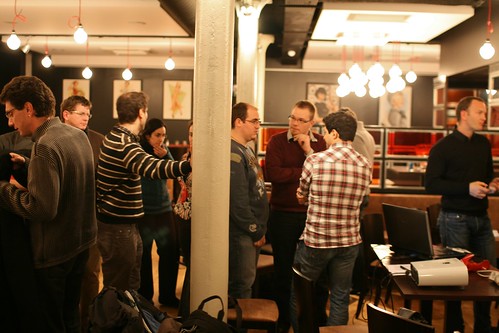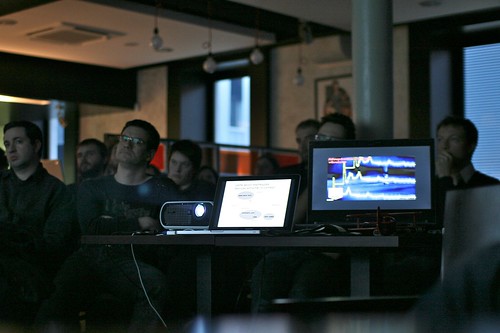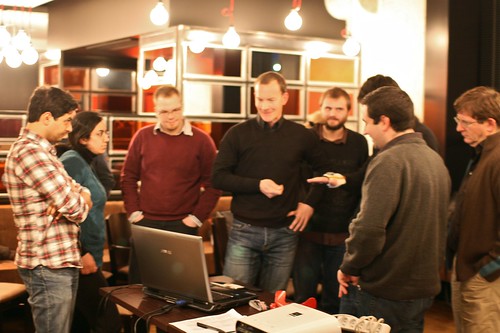 Yesterday in Lyon, Emmanuel Rondeau and myself organized a Lift@Home about gestural interfaces. We (Lift) indeed partnered with Imaginove, a French cluster of companies, research institutions and universities focused on video games, audio-visual, cinema, animation and multimedia. Several other Lift seminars will be organized around various topics such as the Social Web, 3D virtual environment, networked objects and locative media. We'll focus on the uses and practices of each of these technologies, to reflect upon how they are appropriated by users and how this information can be fed back into the design process.
Yesterday in Lyon, Emmanuel Rondeau and myself organized a Lift@Home about gestural interfaces. We (Lift) indeed partnered with Imaginove, a French cluster of companies, research institutions and universities focused on video games, audio-visual, cinema, animation and multimedia. Several other Lift seminars will be organized around various topics such as the Social Web, 3D virtual environment, networked objects and locative media. We'll focus on the uses and practices of each of these technologies, to reflect upon how they are appropriated by users and how this information can be fed back into the design process.
Yesterday's seminar focused on how gestural interfaces such as the Nintendo Wii, new kinds of accelerometers and (3D) cameras are used in the context of video games. There were around 50 participants, mostly game designers, interaction designers and Human-Computer Interaction academics.
After a quick introduction about the evolution of video-game peripherals over time, I described the pros and cons of these kind of interfaces as shown on the following slide

In addition, I mentioned some of the projects we carried out when I worked at Phoenix Interactive, a French video-game studio based in Lyon. These projects showed how we studied the various ways to transmit/explain gestures to players, a project in collaboration with a laboratory in Cognitive Psychology.
The next presenter, Emmanuelle Jacques, a sociologist from the University of Montpellier, described some results from an ethnographical study of Nintendo Wii usage. She described the discrepancy between the gestures that game designers expected to be made and people's practices. As shown in the following picture, the movement amplitude of gestures is indeed quite different with expert players (the smaller girl) and novice players who think they must replicate real-world gestures. Emmanuelle discussed the implications of such notions, showing that playability is a much more complex notion than simply replicating what is done in the physical world.

The following presenters, Timothée Jobert from Litus/CEA and Etienne Guerry from XPteam in Grenoble presented an interesting case study of user-centered design. They described the results of an ethnographic study about how people use two sorts of gestural interfaces (the Nintendo Wii and the Bodypad). They then showed how these results were used in the design of video game prototypes based on a new kind of technology (a combination of an accelerometer and a magnetometer designed by Movéa). They ended their presentation with a demo of their prototypes, leading to a lively discussion about new technologies can overcome the problems game designers encountered with the Wii and the notion of realism.

